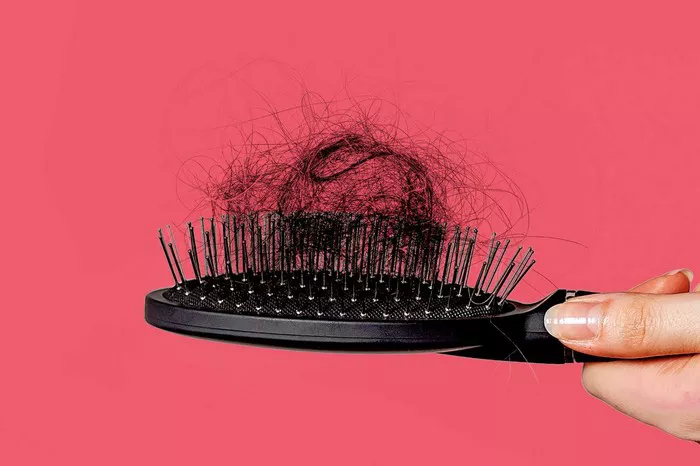Hair loss is a concern that often accompanies aging, but what happens when it strikes at the tender age of 18? As individuals navigate the complexities of adolescence and early adulthood, the unexpected loss of hair can be a source of distress. In this exploration, we delve into the various factors that may contribute to hair loss at 18, separating myths from realities and providing insights into a phenomenon that goes beyond the usual scope of age-related concerns.
Understanding Hair Growth and Loss
To comprehend the normalcy of hair loss at 18, it’s crucial to first understand the basics of hair growth. The human scalp hosts approximately 100,000 hair follicles, each with its growth cycle. Anagen, the active growth phase, lasts for several years; catagen, the transitional phase, is a brief interlude; and telogen, the resting phase, precedes shedding. It’s natural to lose 50 to 100 hairs daily as part of this cycle.
However, when hair loss surpasses this range or occurs in distinct patterns, it raises concerns. At 18, individuals are generally at the peak of their physical health, making sudden hair loss seem out of place. Yet, a multitude of factors, both genetic and environmental, can contribute to this phenomenon.
Genetic Predisposition: The Role of Family History
One of the primary contributors to hair loss at 18 is genetics. If there’s a family history of early-onset baldness or thinning hair, the likelihood of experiencing similar issues increases. Male and female pattern baldness, known as androgenetic alopecia, is often hereditary and can manifest in late adolescence or early adulthood. Understanding one’s family history can provide valuable insights into the potential genetic predisposition for early hair loss.
Hormonal Fluctuations: Puberty and Beyond
The teenage years are characterized by significant hormonal changes as the body undergoes puberty. Fluctuations in hormones, particularly androgens like testosterone, can influence hair growth patterns. While it’s common for hair loss to be more noticeable during hormonal shifts, excessive or sudden shedding may indicate an underlying issue.
Polycystic Ovary Syndrome (PCOS) in females and conditions like male pattern baldness are often linked to hormonal imbalances. Consulting with a healthcare professional can help identify whether hormonal fluctuations are contributing to hair loss and explore potential treatments.
Nutritional Deficiencies: The Impact of Diet
Nutrition plays a pivotal role in overall health, and hair is no exception. A diet lacking essential nutrients, such as iron, zinc, vitamins A and D, and protein, can contribute to hair loss. Fast-paced lifestyles, erratic eating habits, and a preference for processed foods may result in nutritional deficiencies, adversely affecting hair health.
Adopting a balanced diet rich in vitamins and minerals can positively impact hair growth. However, it’s essential to recognize that addressing nutritional deficiencies may take time, and results may not be immediate.
Stress and Lifestyle Factors: Modern Pressures
The fast-paced nature of contemporary life introduces a host of stressors that can impact physical and mental well-being, including hair health. High levels of stress trigger a condition known as telogen effluvium, wherein a significant number of hair follicles enter the resting phase simultaneously, leading to increased shedding.
Additionally, lifestyle factors such as inadequate sleep, excessive heat styling, and the use of harsh chemical products can contribute to hair loss. Adopting stress-management techniques and prioritizing a healthy lifestyle can mitigate these factors.
Medical Conditions: Beyond the Surface
Certain medical conditions may manifest as hair loss in young adults. Autoimmune disorders, thyroid imbalances, and skin conditions like alopecia areata can affect the hair follicles, leading to noticeable shedding. Seeking medical attention to diagnose and address these underlying conditions is crucial for effective management.
Conclusion: Navigating the Complexities of Youthful Hair Loss
While hair loss at 18 may seem untimely and distressing, understanding the multifaceted nature of this phenomenon is the first step toward finding solutions. Genetic predisposition, hormonal fluctuations, nutritional deficiencies, stress, and underlying medical conditions can all contribute to hair loss in young adults.
It’s essential for individuals experiencing early hair loss to consult with healthcare professionals or dermatologists who specialize in hair health. A comprehensive evaluation can help identify the root cause and guide personalized treatment plans, which may include lifestyle modifications, nutritional interventions, or medical therapies.
In conclusion, the normalcy of losing hair at 18 is contingent on various factors, and a nuanced approach is necessary for effective management. With advancements in medical and dermatological sciences, there are options available to address and mitigate the impact of early hair loss, allowing individuals to embrace the journey of self-discovery and confidence in their unique paths to wellness.

